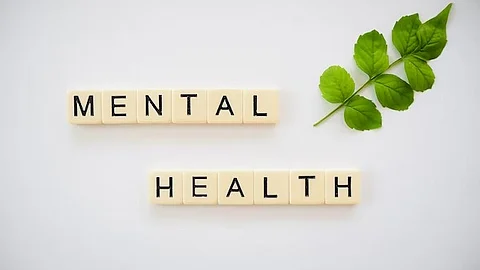

As concerns about youth mental health, school shootings, and other forms of violence prompt more school systems to conduct mental health screenings, a UCR-led analysis is urging school officials to proceed with deference to student family, cultural, and community backgrounds.
Mental health screenings that focus solely on identifying at-risk students without taking into account their backgrounds and their strengths may not only be ineffective but may also perpetuate harmful oppressive practices that curb rather than promote student success. In “A Roadmap to Equitable School Mental Health Screening,” published online this week in the Journal of School Psychology, a team of experts in school mental health systems, including UCR assistant professor Stephanie Moore, argue for a holistic approach to mental health screenings.
The social and environmental conditions that contribute to poorer mental health, such as economic instability, food insecurity, and exposure to neighborhood violence, also increase the individual risk for violence or self-harm. Our focus, then, must shift toward identifying these factors and addressing them in ways that lessen their impacts on student wellbeing, Moore said.
Culturally sensitive mental health screenings are powerful tools to get students the help they need. They not only increase academic success for individuals but also help schools be more responsive to student needs and help communities to be more resilient. Ideally, mental health screenings should be conducted periodically as schools do for math, reading, and writing skills, Moore said.
Existing tools, however, may not be appropriate. They may have implicit bias built into them.
“Screening tools aren't always developed with non-white cultures in mind,” Moore said. “Few tools have been developed to reflect culturally specific ways of understanding or talking about mental health and evidence about the effectiveness of screening tools specifically for use with racially and ethnically minoritized populations is often lacking.”
So, asking families and community members the right questions beforehand is essential to learn students’ needs as well as strengths in their families and communities.
“How can we make sure that the processes we're engaging in are reflecting those things that matter and are responsive to your needs?” she asked rhetorically. “How can schools help, as a pillar of your community, to build up strengths and address any needs?”
The majority of educators in US public schools come from white middle-class backgrounds and they should work to keep in check their own bias, which may be subtle or even subconscious.
“We know, for example, that Black or African American students are more likely to be subjected to exclusionary discipline than students from other racial and ethnic backgrounds,” Moore said. “They're suspended and expelled at a higher rate.”
This discipline track can lead to terrible outcomes, such as dropping out of school and worse. And it can start with “cultural mismatches,” expectations that children from other cultures should behave as children from white cultures, Moore said.
When the focus for screening is to identify an individual’s mental health risk, “educators and schools disregard social determinants of health and often implicitly ask, ‘How can we get these disadvantaged students to be or function more like middle-class, White ones?’” wrote Anna Long, co-author and associate professor at Louisiana State University.
Moore elaborated, “For example, teachers may misinterpret what is the play between a boy and his friend, (and believe), ‘Oh, that child is aggressive.’ Because of cultural differences and biases, they don't understand what play is common in this boy’s community and instead judge him as having behavior problems that need to be addressed."
Culturally appropriate mental health screenings can go well beyond identifying students who need counseling or specialized resources to better succeed, the paper says. They can also reveal larger strengths or needs in the schools and their surrounding communities.
In terms of strengths, the screening team may identify after-school sports and church programs that help students become less isolated and more engaged in their communities. They could also identify strategies to better tap mentors for students within their families.
In terms of needs, screening teams that find food insecurity as a chronic problem among certain student groups may advocate for the expansion of school meal programs, providing snacks, or partnering with community agencies to offer families meals, especially on weekends and during holidays and summer breaks, said co-author Kelly Edyburn, a senior researcher at Education Northwest.
Using screening results to build systems of supportive interventions can also combat disproportionate referrals for special education or exclusionary discipline of students belonging to certain cultural groups, the report said.
Moore acknowledges that providing universal mental health screening at public schools requires time and resource investment and may face resistance from school leaders who may believe such screenings fall outside the scope of public education. But she argues the costs are justified because better mental health improves academic performances that result in positive social-economic outcomes.
“If we were to ask families about mental health, most families would say, ‘Yes, I want my child to be healthy and well,’ ” she said. “So, I think at a fundamental level, we can find agreement.” (NJ/Newswise)
